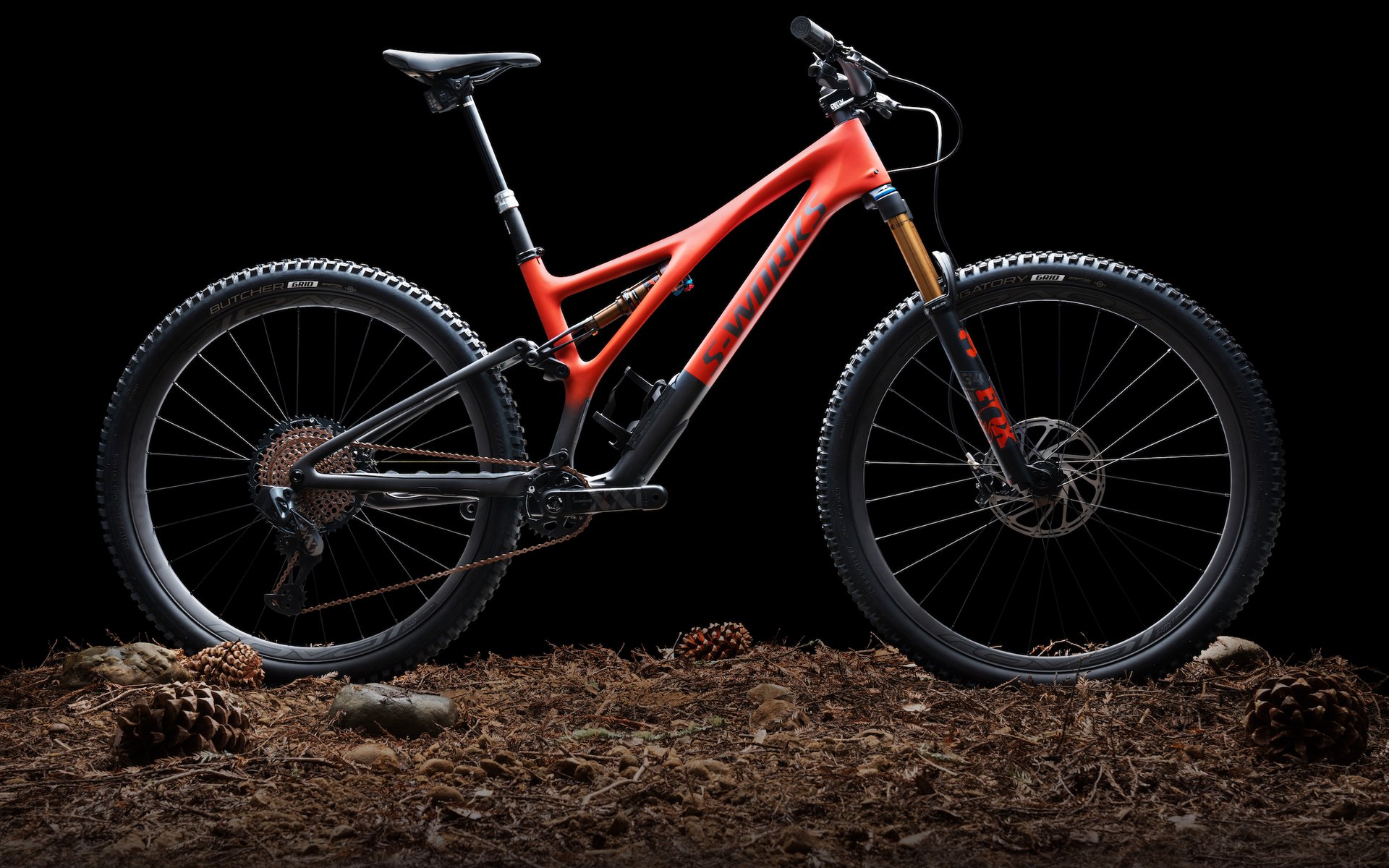
Focused on 29
2021 Specialized Stumpjumper
When Specialized released the current Stumpjumper in 2018, the bike included many changes to the outgoing model. But at the same time, they revealed an alloy only Stumpjumper EVO with an attention-grabbing progressive geometry, and a shorter travel version; the Stumpy ST.
Today, Specialized is releasing their latest incarnation of the Stumpjumper and with it a more focused approach. The Stumpjumper EVO remains part of the range and the latest model was released a week ago. It finally receives a complete size range and continues the progressive geometry lineage of the EVO name, but there’s no more Stumpjumper ST and the regular Stumpjumper is only available as a dedicated 29er.
The new Stumpjumper’s geometry has also evolved with the predictable longer, lower, slacker updates. Throughout the frame, Specialized continues to evolve its manufacturing processes to create a more consistent and comfortable ride, one they claim continues through the size range. The team also wanted to mesh the calmer pedalling and weight of the Epic EVO with the gravity abilities and comfort of the Stumpjumper EVO.
The layup process has been updated, the area of the frame where the SWAT door is integrated has been reworked, and the suspension has improved. And that’s the key here, everything that’s gone into the new frame is an improvement on the previous more than it is revolutionary. At first glance, this doesn’t appear greatly different from the outgoing model but Specialized tells us many areas saw updates.
Highlights
- Carbon and alloy frame options
- The Horst Link is gone on carbon models, replaced with a flexstay
- RX suspension tune
- Features a Fox DPS shock with a digressive piston
- Travel: 140mm front / 130mm rear
- Six size options
- Flip-chip to adjust geometry
- Frame weight: S4 S-Works – 2,420g/5.34lb (hardware, shock, seat collar, protection etc.)
- MSRP: 2,199–9,499 USD

Different material layups and composite combinations were evaluated to produce a lighter but tougher frame. .
Frame Design
Losing the pivot from the chainstay of the Stumpjumper is a relatively big move for Specialized, considering their bikes have been synonymous with the Horst Link design, which they held the patent to until recently. When asked why they moved in this direction, Specialized engineers noted they cut weight – claiming 55 grams in hardware – from the frame by removing the Horst pivot. They also claim that improved lateral and torsional chassis stiffness was achieved with the move to the flexstay.
Another claim is that moving away from the Horst Link on sub 150mm travel bikes provided an improved ride. They note that on their 150mm+ bikes, the Horst Link is better able to shine and looking at their range now, it’s clear they feel strongly about this new direction. The shorter travel Epic models also use a flexstay rear end but any shorter travel aluminum-framed options retain the Horst Link.
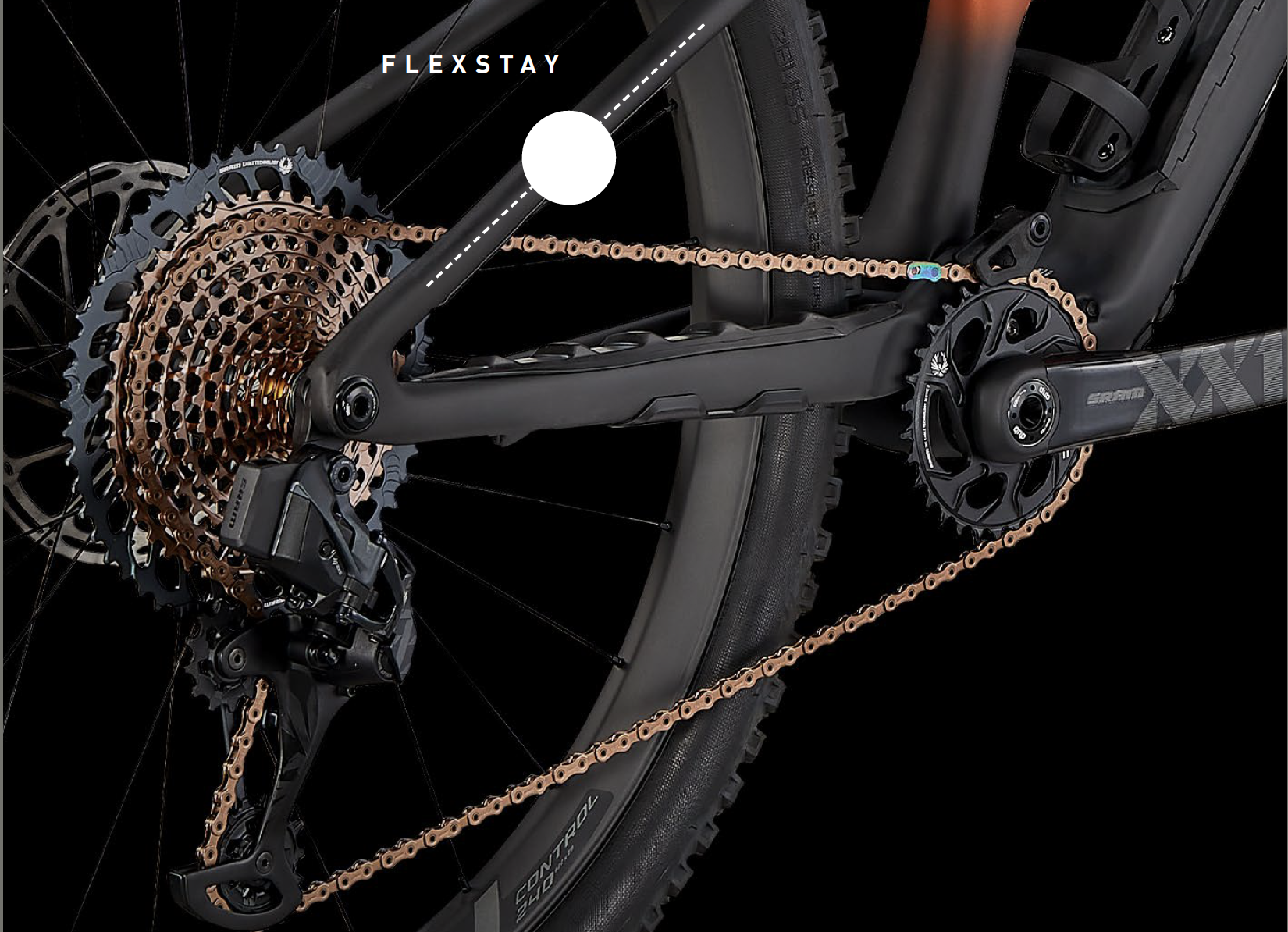
Specialized ditched the Horst pivot traditionally found on the Stumpjumper in favour of a lighter flexstay. Only the two alloy framed 2021 Stumpjumpers will continue with the Horst Link design.
Throughout the development of the new frame, engineers apparently focussed on cutting weight while adding strength. Thanks to what they've learned over time and from the development of the Aethos road bike frame – mentioned more than once in the presentation – the team had new methods at their disposal. This translated to an improved carbon layup that cut 100 grams of fat from the frame.
But as the engineers looked to trim the new Stumpy’s numbers on the scale, they also wanted to improve handling characteristics and strength. The team worked on the shape of the frame, stating that this largely determines the weight, stiffness, and durability. They eliminated as much “lazy” material as they could, ensuring that every fibre is contributing to the frame’s strength and stiffness.
At the 2019 Stumpjumper launch, many of the same claims were made, as were the points of discussion around applying this process throughout the size range. Doing it for one frame size is hard enough but to provide an optimized ride across all sizes, the tube shapes and thickness have to be adapted accordingly. At this point the process of working out the best layup began and they spent more than 200 days in this phase. It took the team 12 iterations of the front triangle alone, before arriving at their targets.
While working on improving the layup and composite mix of the frame, Specialized also improved the frame around the SWAT door. A sort of exoskeleton was introduced in the layup, better-transferring forces through this part of the frame, improving strength and ride characteristics.
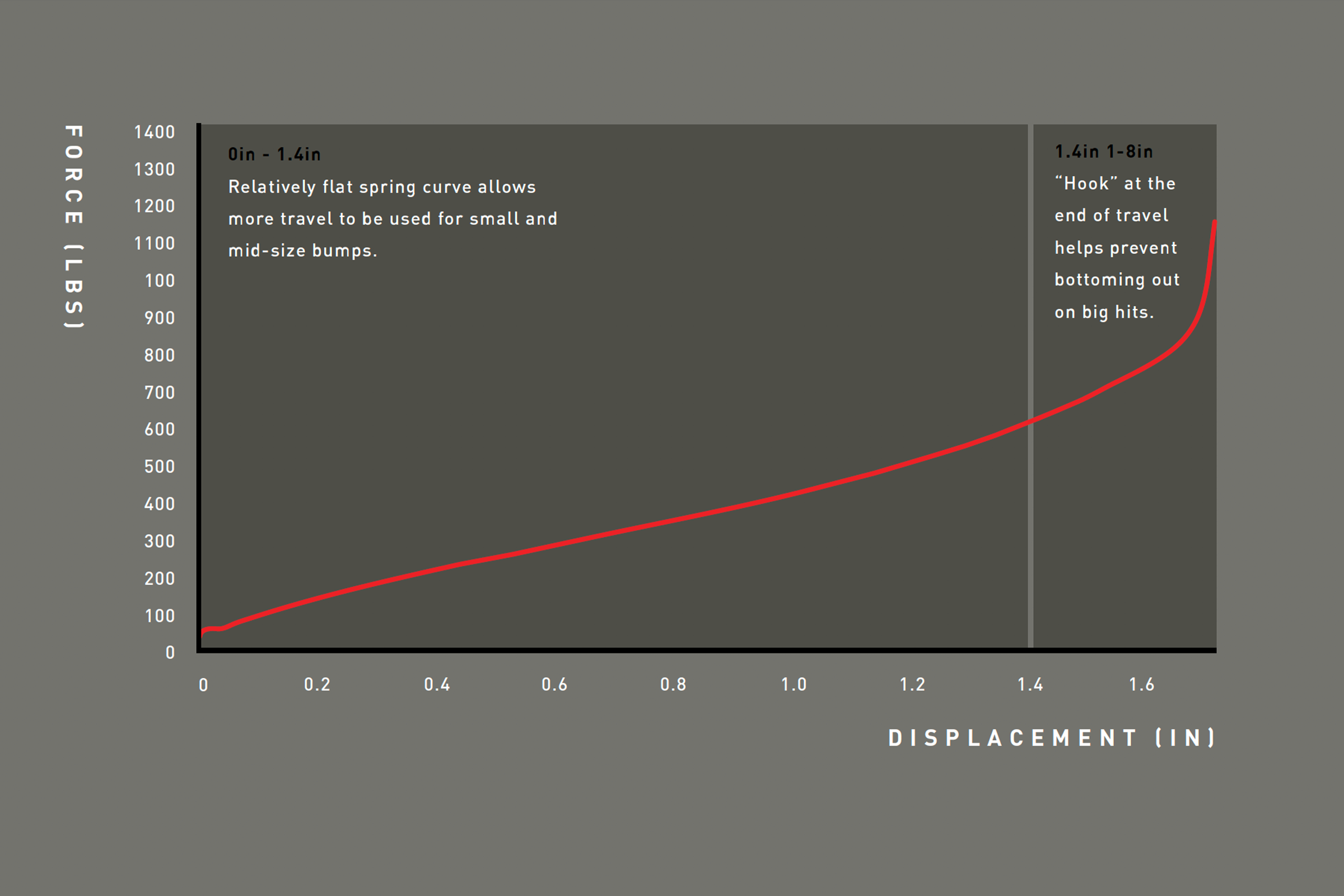
The 2021 Stumpjumper's spring curve
Suspension Design
Moving to a flexstay rear triangle introduces new characteristics to the feel of the rear suspension. With the Horst Link removed from carbon models, the flex from the rear triangle introduces an additional spring element and provides a subtle rebound to the rear that influences the shock. Specialized also noted that their flexstay introduces a subtle negative spring, improving feel off the top of the stroke.
Working with the characteristics of the new flexstay, Specialized engineers moved to the digressive piston offered by Fox in the DPS shock. They say this design allowed them to add considerable LSC (Low-Speed Compression) while retaining a relatively light HSC (High-Speed Compression) tune. Their goal was to provide a stable, energetic bike when mashing on the pedals, but for it to remain comfortable when things got rough. The spring curve is quite linear with Specialized noting they wanted riders to use full stroke with the progressive leverage curve. Specialized claims that together, the tune and flexstay also provide a supportive mid-stroke.
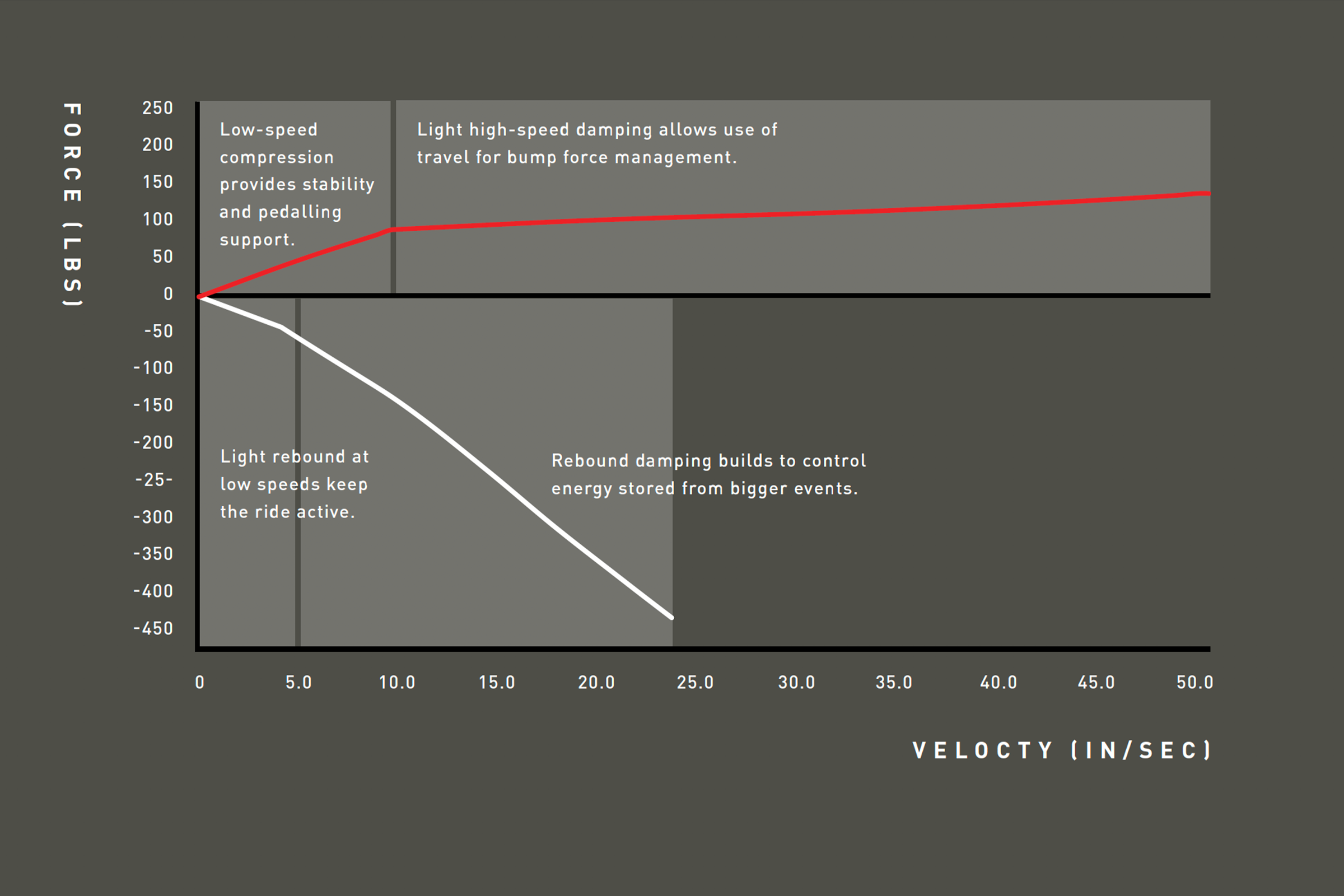
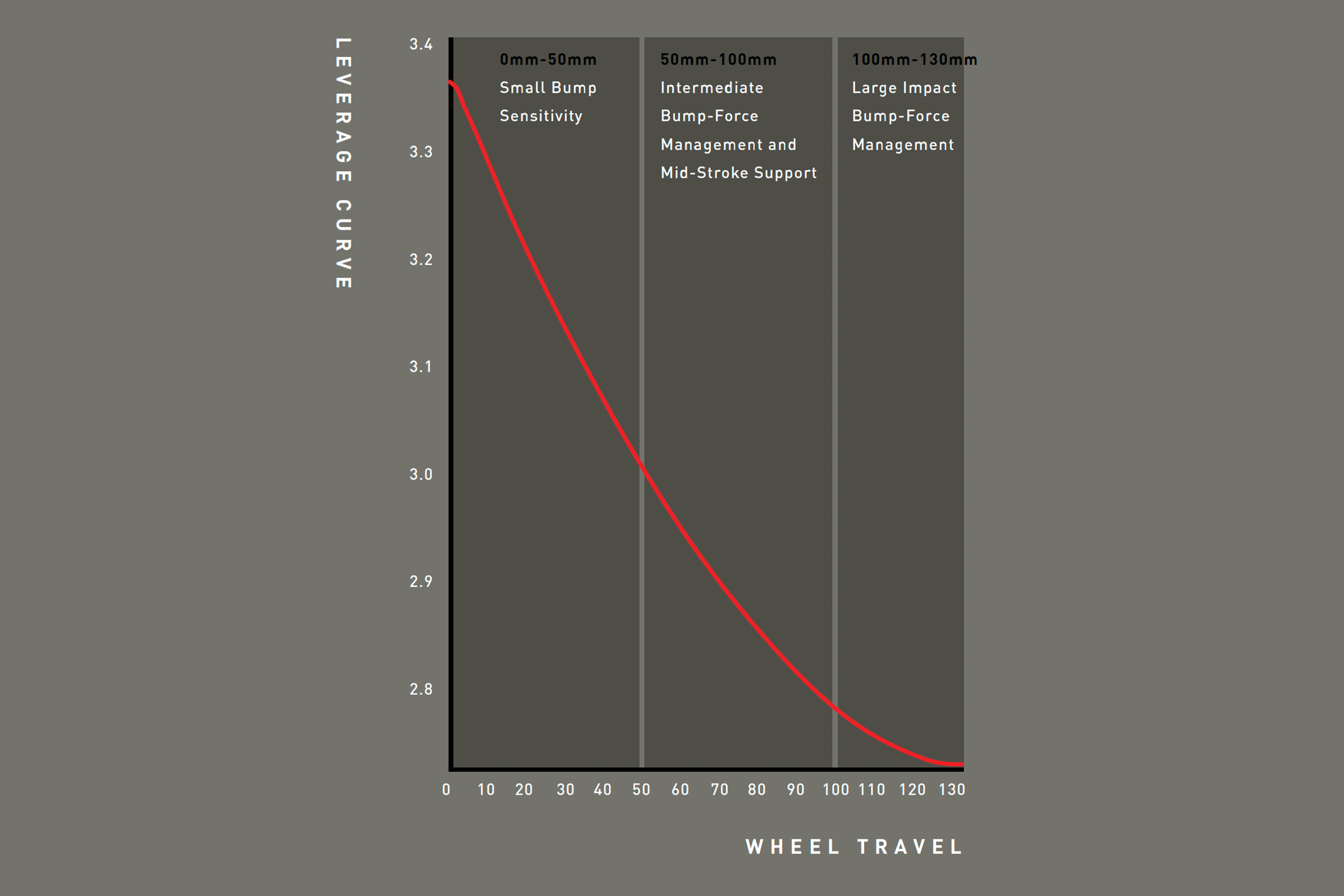
Things also got interesting with rebound tune. Specialized RX (Rider Experience) engineer, Chance Ferro mentioned that a time where the shock tune was near complete, they were sent back to the lab. After a ride with fellow Specialized staff member and ex-World Cup Downhiller, Brad Benedict, they realized it didn't cover the range of riders as well as hoped. Brad’s a big fella and rides like an ex-World Cup Downhill racer; fast and hard. He found the rebound tune of the new Stumpy didn’t provide him with the stability and grip needed, sending Chance and his team back to work. In the end, the Fox DPS shock’s wide rebound range allowed the RX team to make the changes without the need for an additional tune for bigger frame sizes.
Specialized claims the linear spring curve, a progressive leverage curve, the digressive piston in the damper and extra time spent on the rebound tune allowed them to “deliver a highly controlled, responsive, and precise ride.” The rebound tune was referenced more than once during the presentation for its ability to not only cover a wide range of riders but also to respond well to all scenarios. Larger events that cause the spring to quickly store energy (returning aggressively without appropriate damping) needed to be controlled but Specialized also needed the suspension to remain active for grip when encountering smaller feedback, and still be responsive to rider input, creating a lively ride. They say they achieved this, and with only one tune. For reference, the new Specialized EVO, with Fox DPX shock, required two tunes to cover the gamut of riders.
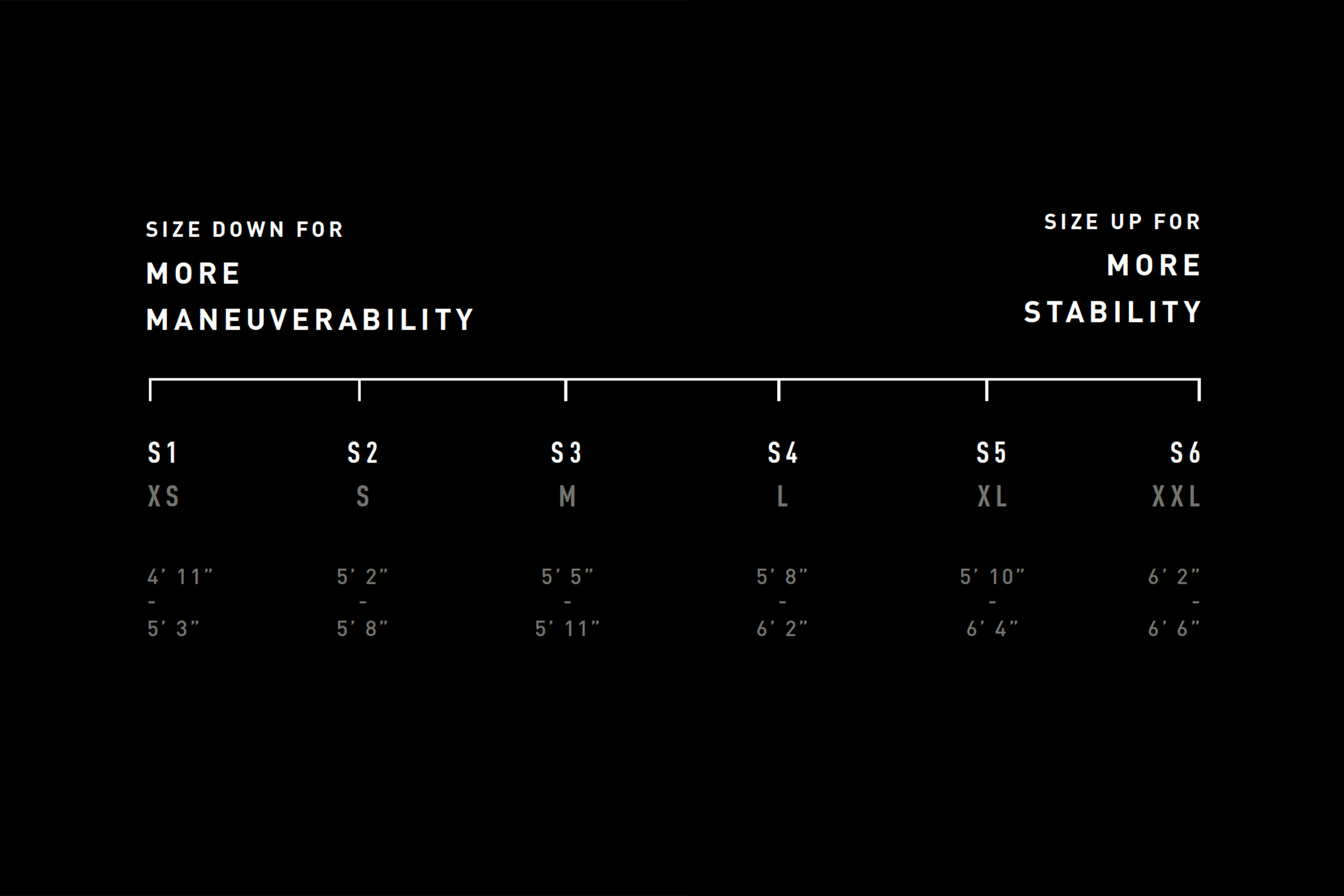
Geometry & Sizing Philosophy
With the release of the 2019 Stumpjumper, Specialized unveiled a new sizing philosophy. It’s not a completely new approach and has been tried by others, but Specialized feel it better tells the story for each size. They believe that the ’t-shirt’ sizing convention we’re more accustomed to is best left for newer riders; it’s easier to understand and for shop staff to explain. Where more nuanced riders are concerned, the ’S’ sizing provides room to move and base their decision off preference, without the constraints of seat tube length (another geometric leftover from our road bike influenced history).
Their current sizing convention moves away from a focus on seat tube lengths, which they say provides riders with more choice when selecting a bike. Riders can choose to ride a longer wheelbase for increased stability, remain on a more traditional size for a balanced ride, or jump on a smaller size and jib everything in sight. A growing range of long length dropper posts is also helping cover some of the constraints put on taller riders by such a philosophy, though there'll surely be some who will continue to have problems here.
Specialized increased the spread of riders covered too, with six sizes, up from the previous model's four. And although they’ve moved to a 29-inch wheel across all Stumpjumpers, they claim the standover of the S1 – the smallest frame size – is improved from the smallest size in the previous model. If riders of a smaller stature have clearance issues from the larger rear wheel, a smaller 27.5-inch wheel can be slotted in the rear with the help of the yet to be complete link that will retain geometry and suspension characteristics.
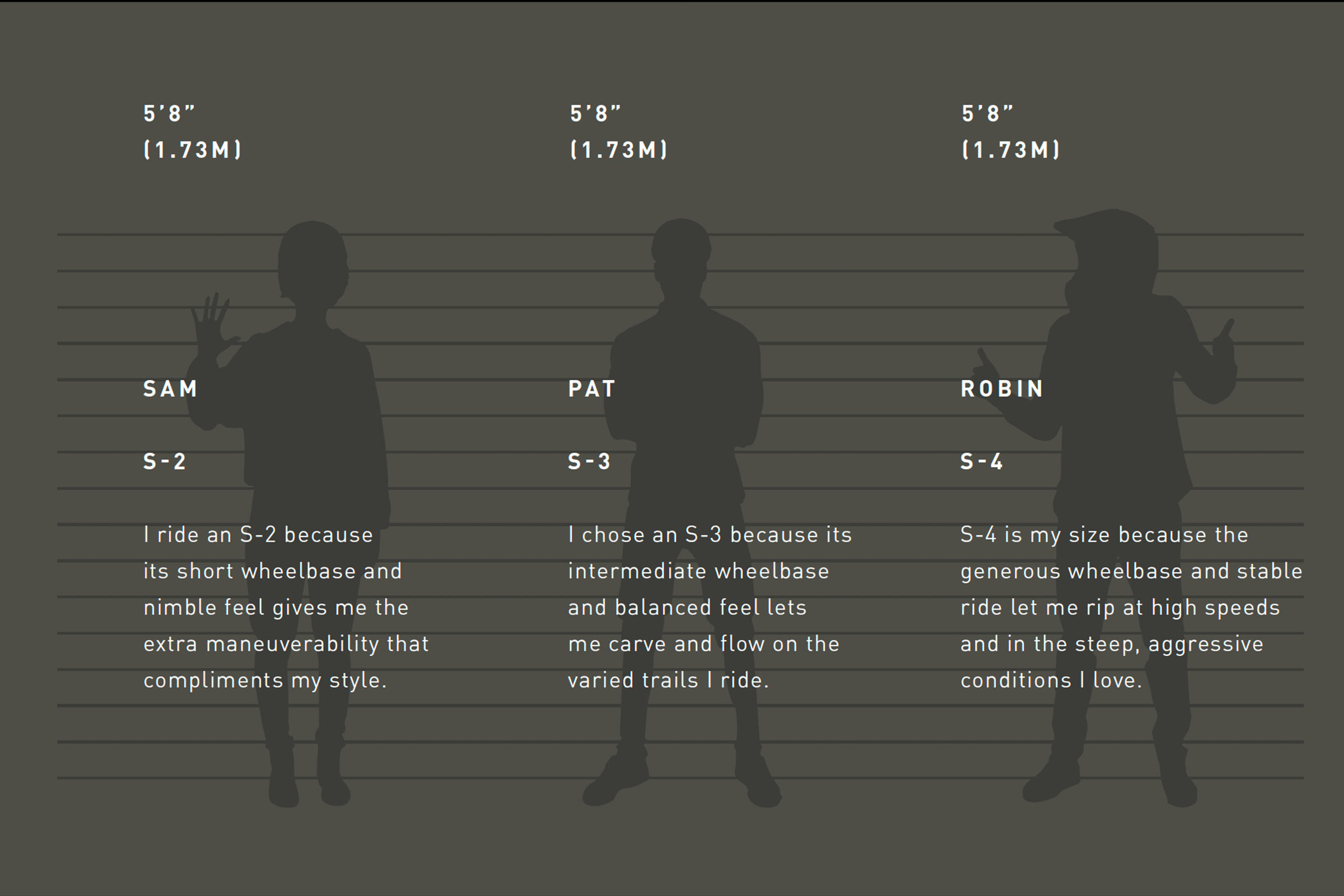
The addition of two more frame sizes isn’t just to cover the smaller and larger end of the scale. Comparing the outgoing medium Stumpy with the equivalent S3 in the new range shows that the sizes have grown in length. The previous Stumpy geometry was relatively conservative even at its time of release in 2018. For the 2021 model, Specialized has brought the bike toward progressive territory without going wild. The S3’s reach has grown 30mm (425mm–455mm) while the top tube length grew just 10mm (595mm–605mm).
If desired, dropping from the 50mm stem supplied on the previous size medium to a 40mm gives riders the same cockpit feel with more room to sit between the wheels. Combined with the 1-degree slacker head tube angle and a shorter, 44mm fork offset, riders should be able to feel more protected when tackling the trail without losing the ability to adequately weight the front wheel.
In addition to the growth of the front centre, Specialized has introduced size-specific rear centres. Sizes ranging from S1 through S4 feature a 432mm chainstay while the S5 and S6 models come with a 442mm rear. The previous Stumpjumper featured a 437mm stay across the range. Headtube length and stack also grew on the medium size; 15mm and 4mm respectively. Interestingly on the larger sizes, the stack shrunk with the XL (S5 in the new range) moving from 656mm down to 636mm.
Lastly, as has become all too common, we see the seat tube angle kicked forward to a steeper, 76.6 degrees from 74.5. The previous Stumpjumper’s STA slackened as the size of the frame increased but now the 76.5-degree STA is consistent across all sizes.
The Stumpy retains the flip-chip in the rear shock eyelet, allowing for 7mm of adjustment at the bottom bracket and half-a-degree of adjustment to the head and seat tube angles. In the comparisons I made above, I used the high position thanks to the bottom bracket height more closely matching the previous model numbers available on the Specialized website. The 7mm of adjustment allows for a very low BB drop of 42mm, for those who want the added stability of sitting deeper into the bike.
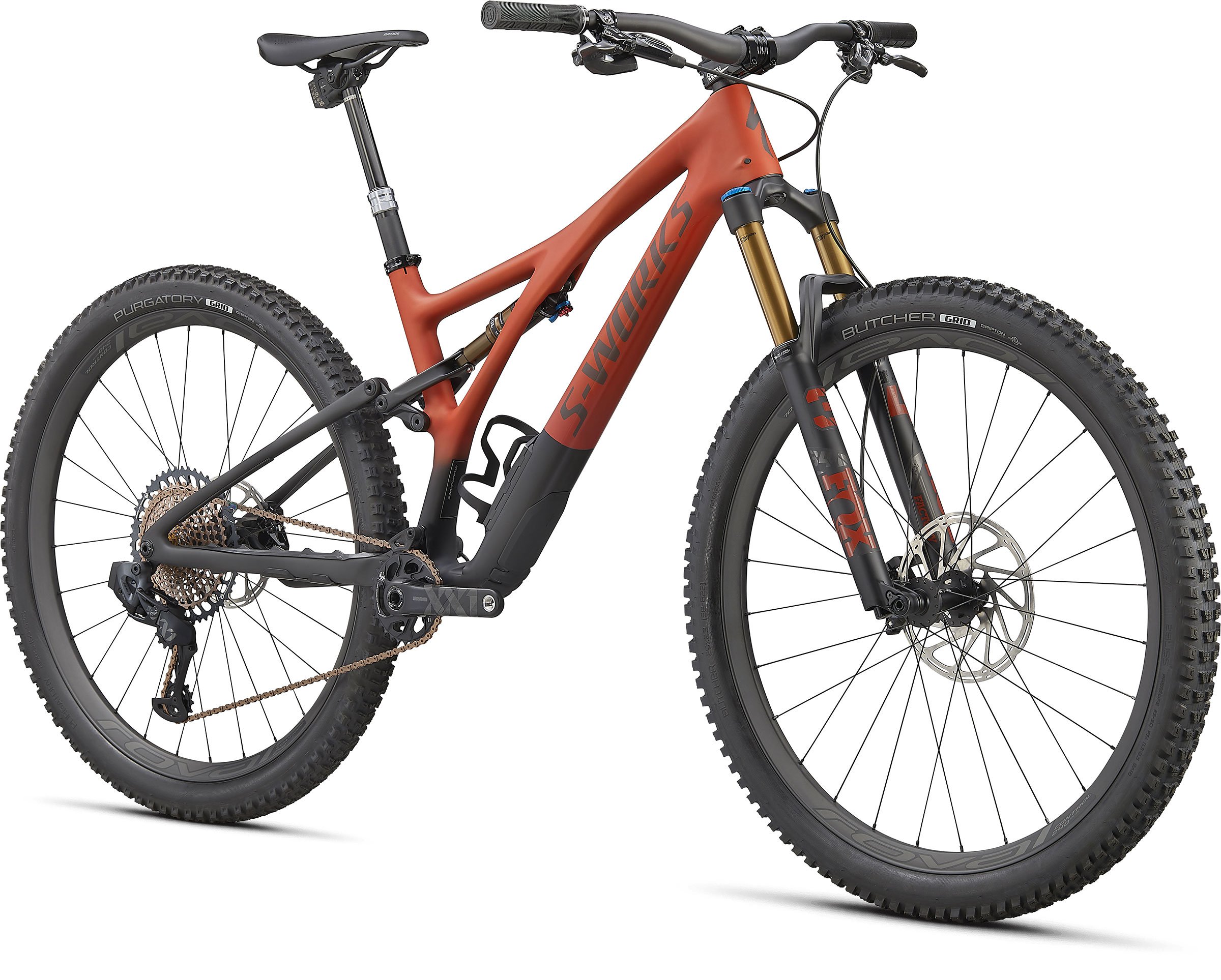
The top of the line Stumpjumper S-Works with SRAM Eagle AXS will set you back 9,499 USD
The New Stumpjumper Models
The Stumpy is focused on 29-inch wheels but there was mention during our presentation of a yet to be released aftermarket link that will provide riders with a mix-wheel option, should they desire. Specialized is still fine-tuning it, so expect some time before it’s available.
Specialized has kept the more value-focused option of alloy frames alive too. Aside from the differences in ride quality – which Specialized has worked hard to minimize – the alloy frame retains the Horst Link suspension design. Engineering flex into a carbon rear end is possible but Specialized noted that it represents problems with aluminum. For this reason, the Horst Link had to remain with the alloy frame.
The new bikes range in price from 2,199 USD for the base alloy frame model to 9,499 USD for the S-Works with SRAM AXS drivetrain, Fox Factory 34 GRIP2 and DPS Factory shock. Each model comes in two colours and there is an S-Works frame only option – also in two colours – that will retail for 2,799 USD.
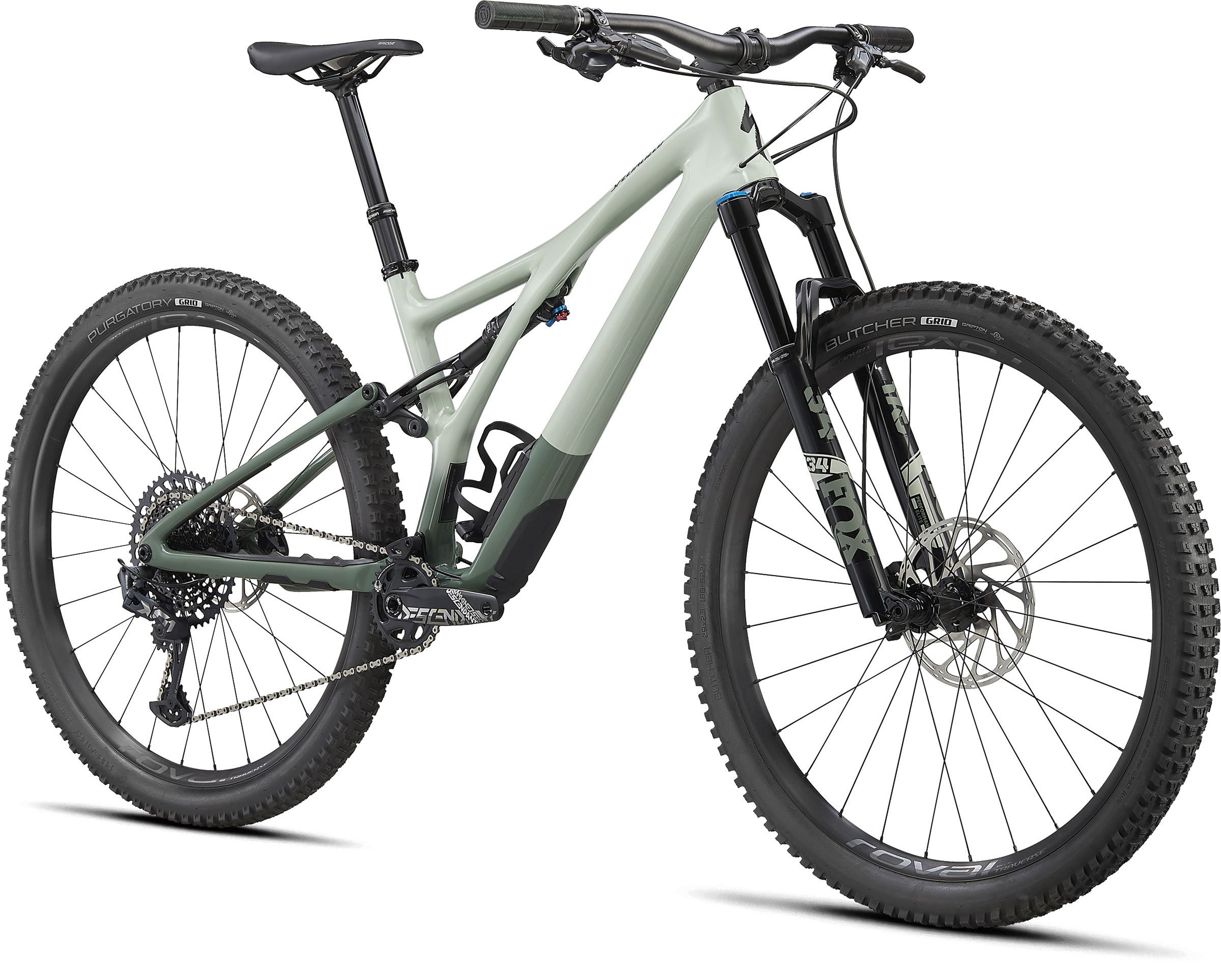
Pro (Gloss Spruce/Sage Green): 6,999 USD
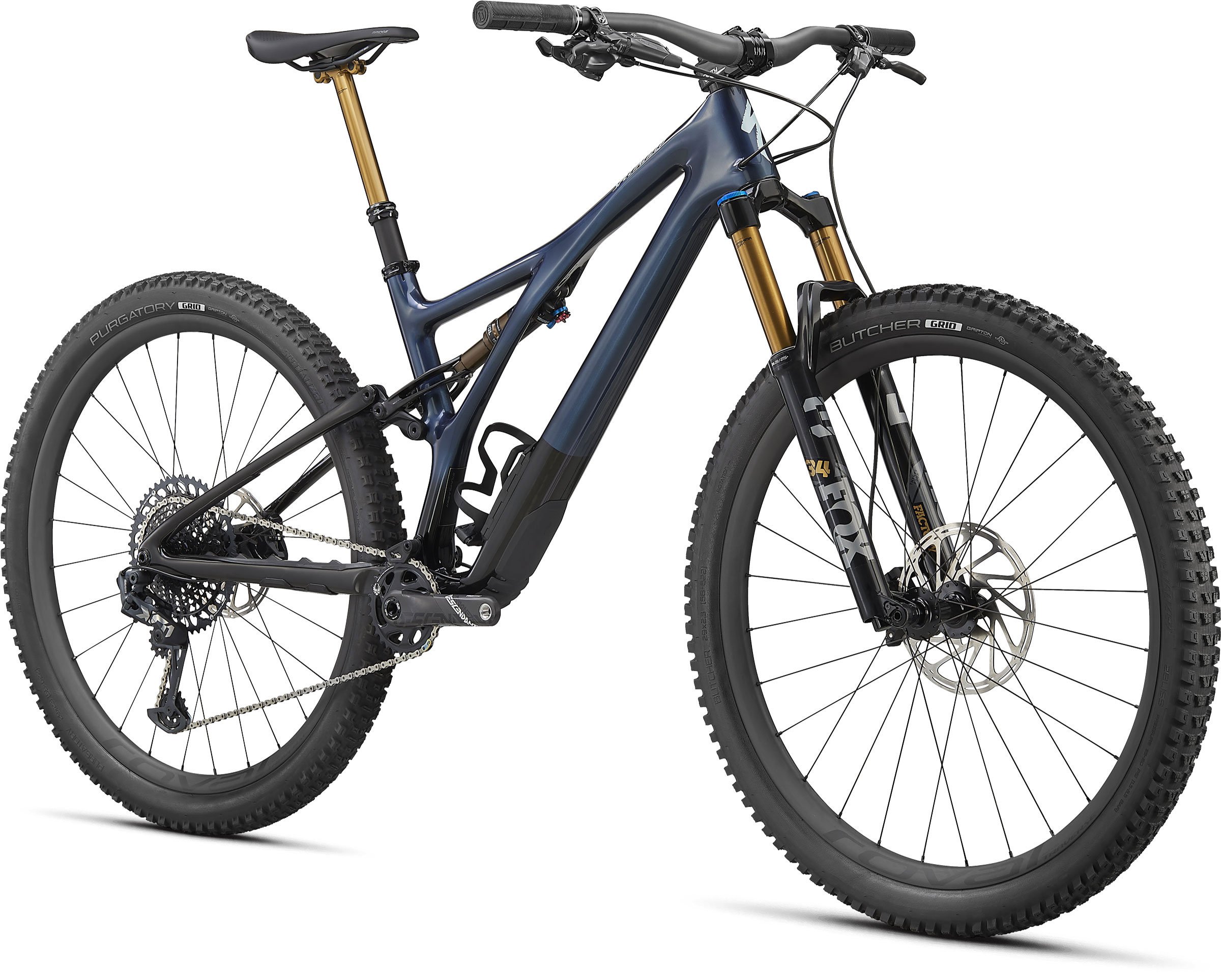
Expert (Gloss Cast Blue Metallic): 4,699 USD
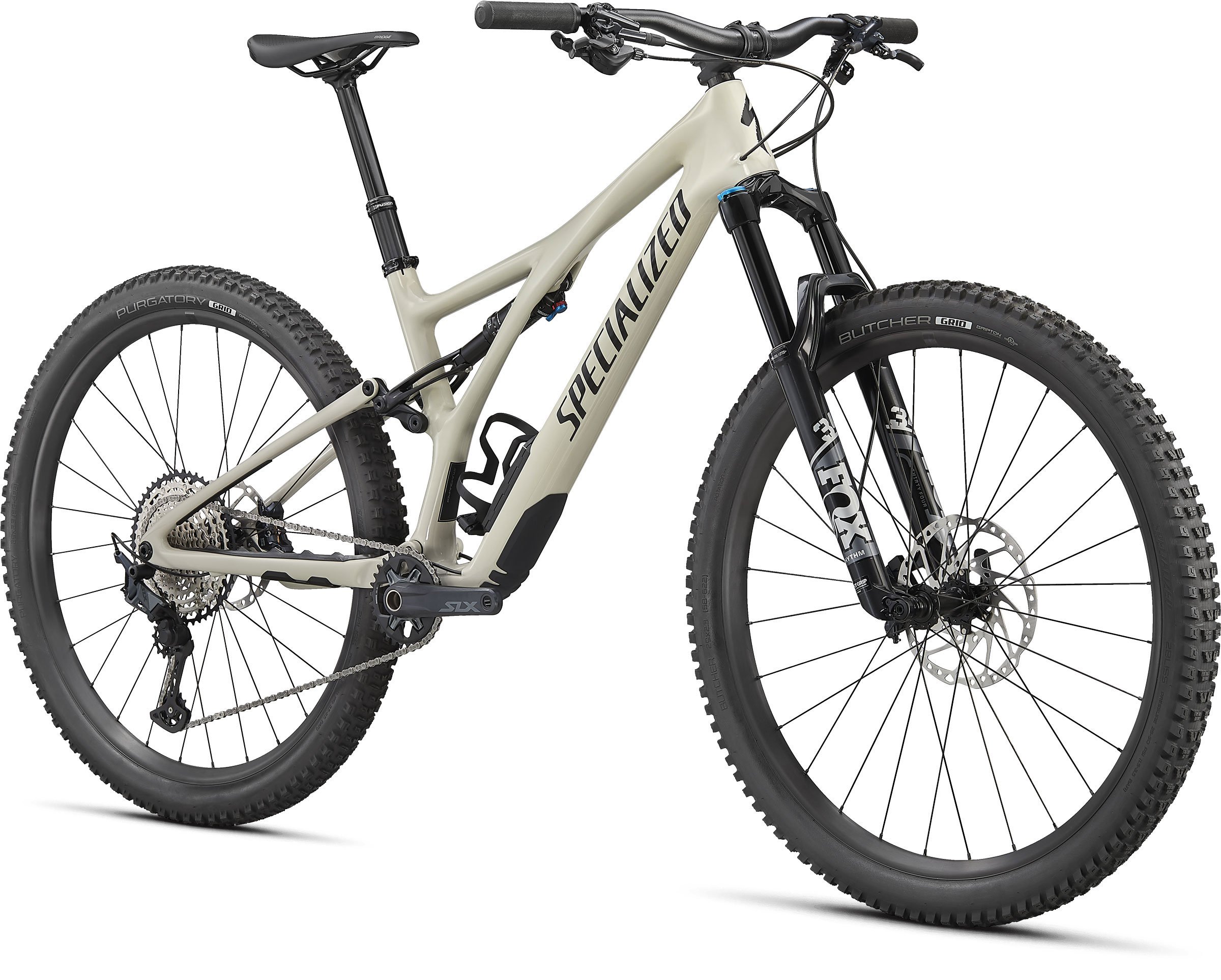
Comp Carbon (Gloss White Mountains): 3,999 USD
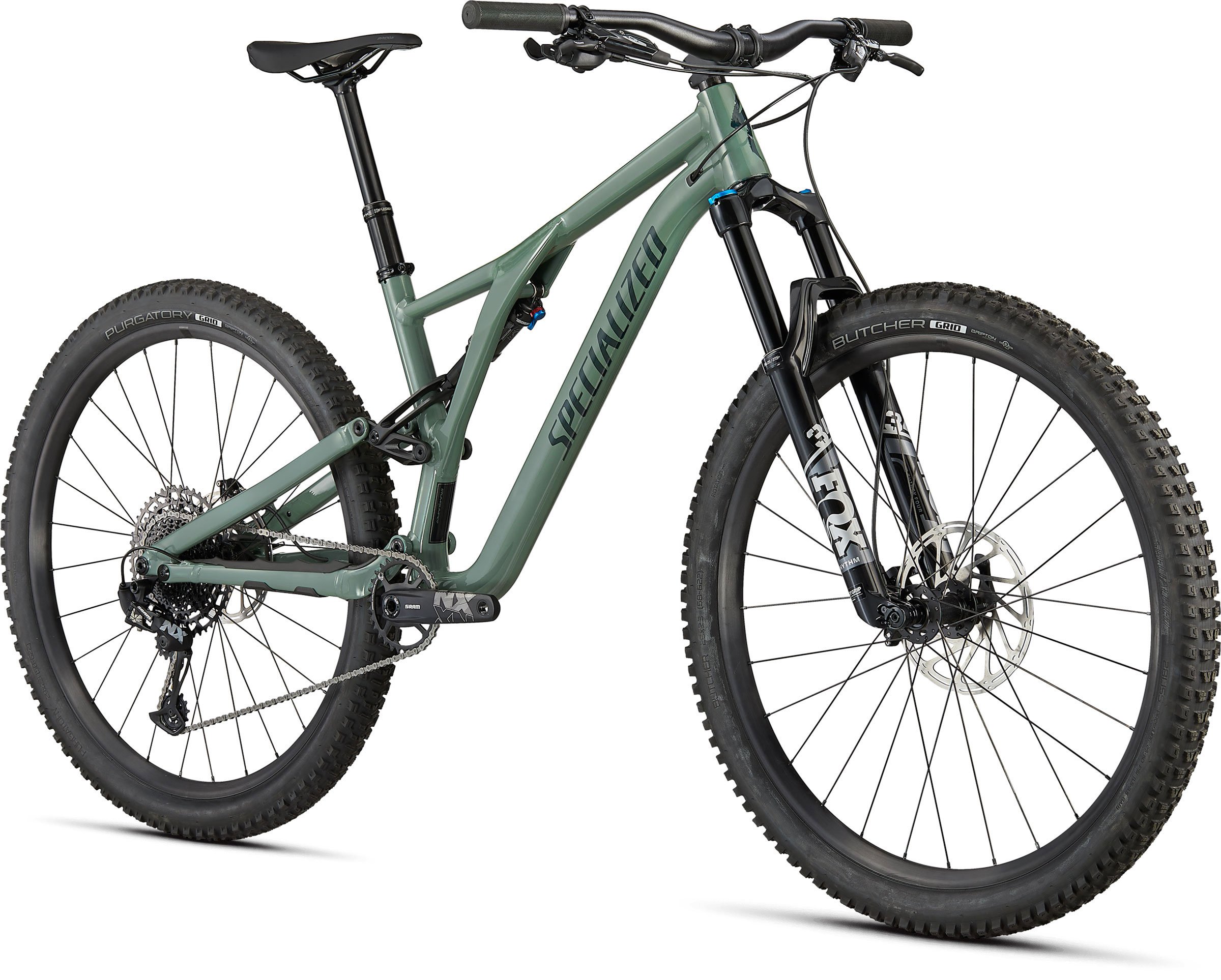
Comp Alloy (Gloss Sage Green): 3,199 USD
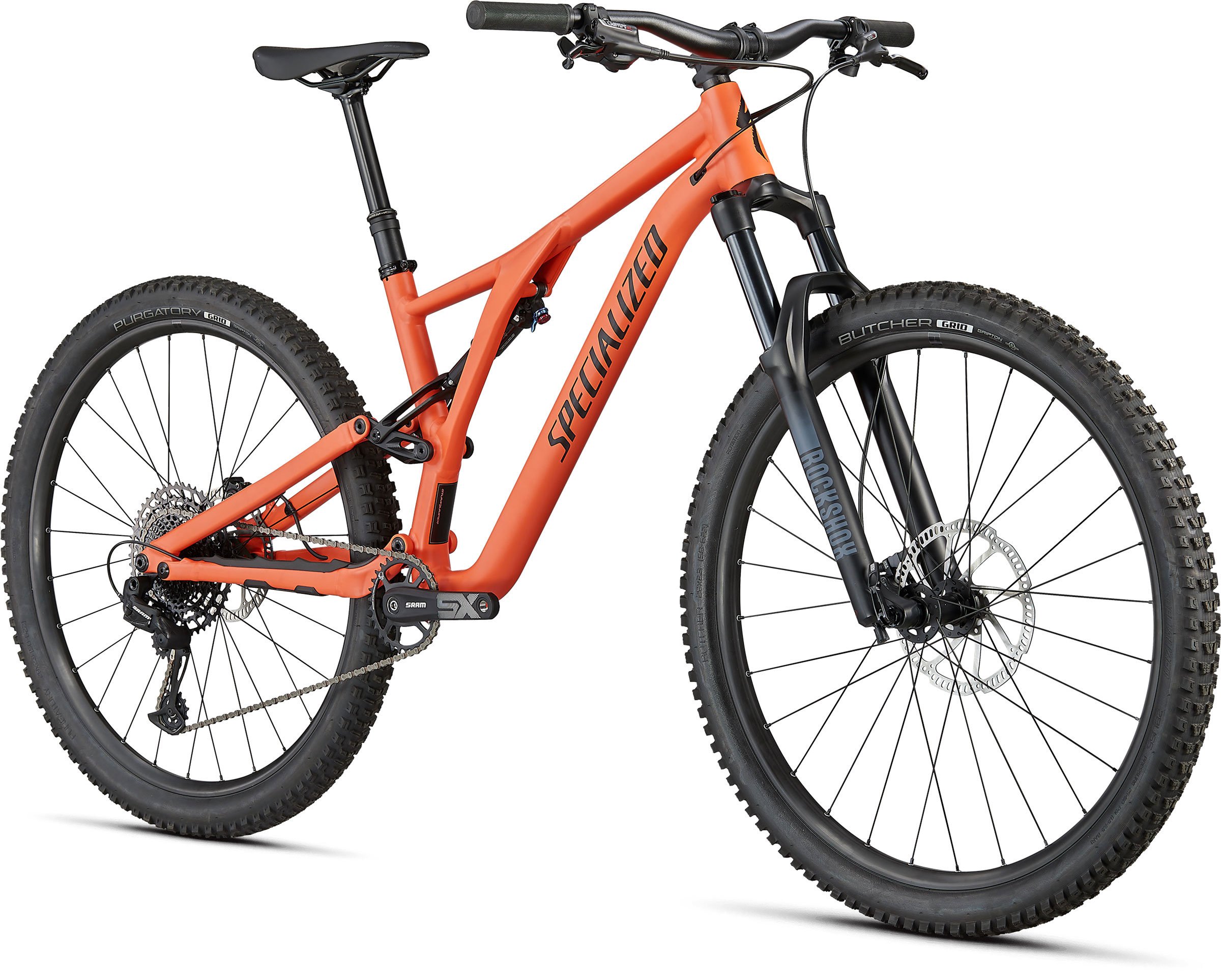
Base Alloy (Satin Blaze): 2,199 USD
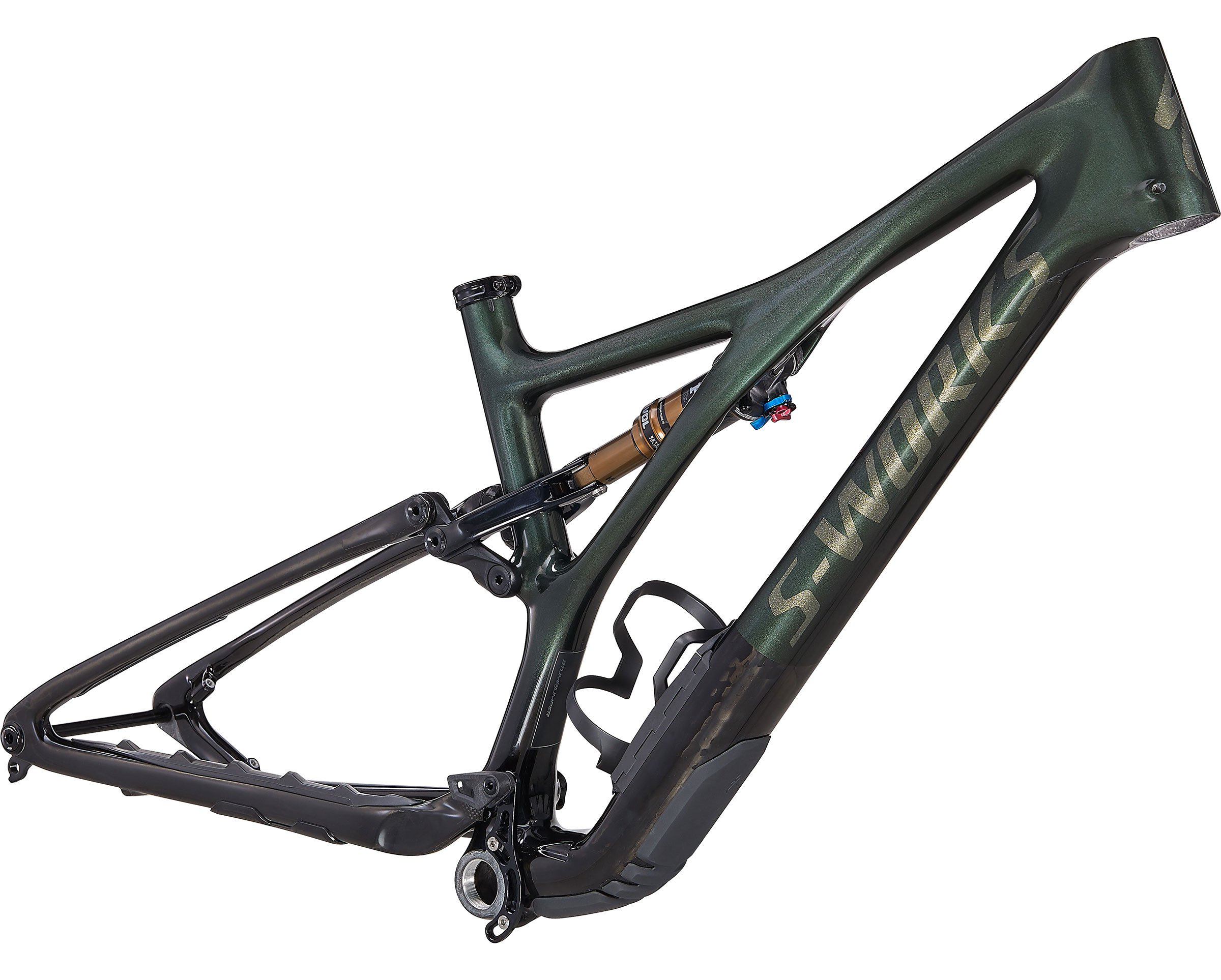
S-Works Frame (Gloss Oak Green Metallic): 2,799 USD
2021 Stumpjumper Pricing
- S-Works: 9,499 USD
- S-Works Frame: 2,799 USD
- Pro: 6,999 USD
- Expert: 4,699 USD
- Comp Carbon: 3,999 USD
- Comp Alloy: 3,199 USD
- Alloy: 2,199 USD
More on the 2021 Specialized Stumpjumper is available on their website.




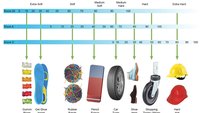





Comments
Alex D
3 years, 6 months ago
Very interested in this one. More travel than a 'downcountry' XC bike, but without the seeming indifference to weight that adds a pound or three to every other trail frame. And they've managed it with storage, a threaded bottom bracket, and intelligent routing, at a shockingly reasonable frame price. Looking forward to getting a leg over it.
Reply
Lu Kz
3 years, 6 months ago
Interesting that a company would have a pretty different alloy and carbon model. I can't recall the last time I saw a different suspension design and substantially longer chainstays on a bike in the same model year. I can think of several examples within the same lineup, but they get different names.
I do think this looks like a really sweet, possibly quite light trail bike. Too bad it doesn't have quiiite as much adjustability as the new Evo but I also understand there's lots of folks out there who don't care for that.
Edit: Wow, an actual stumpjumper for sub-3k CAD. Not bad
Reply
Please log in to leave a comment.